
Feel free to add tags, names, dates or anything you are looking for


"The most striking sensation upon my return, after enduring such a lengthy captivity in the north, was returning to the sun. I witnessed through words, music, and art the sun's offspring, basking in its radiant embraces and joyfully extolling its magnificence." Kote Marjanishvili, 1923
For Georgians, the sun is one of the most universal concepts and images. It incorporates both pagan and Christian connotations, as well as conveying astrological and philosophical interpretations. In Georgian culture, the sun possesses archetypal, mythic, associative, and poetic significance. It is the protagonist of myths, folk tales, legends, rituals, and chants – for instance: "Lile," "The Sun Inside and the Sun Outside". The sun forms the foundation of words, names, and idioms, serving as the world's eye and a transcendental archetype of light. It symbolizes radiance, birth, and intuitive thought. Represented by various authors from different eras in Georgian culture, the sun is a symbol of fertility, hope, life, and love. It is also regarded as a symbol of Georgia itself. Referred to as the "visible face of the Lord," it signifies that a human is "part of the sun;" in other words a "part of the Lord." In this world, the sun is omnipresent.
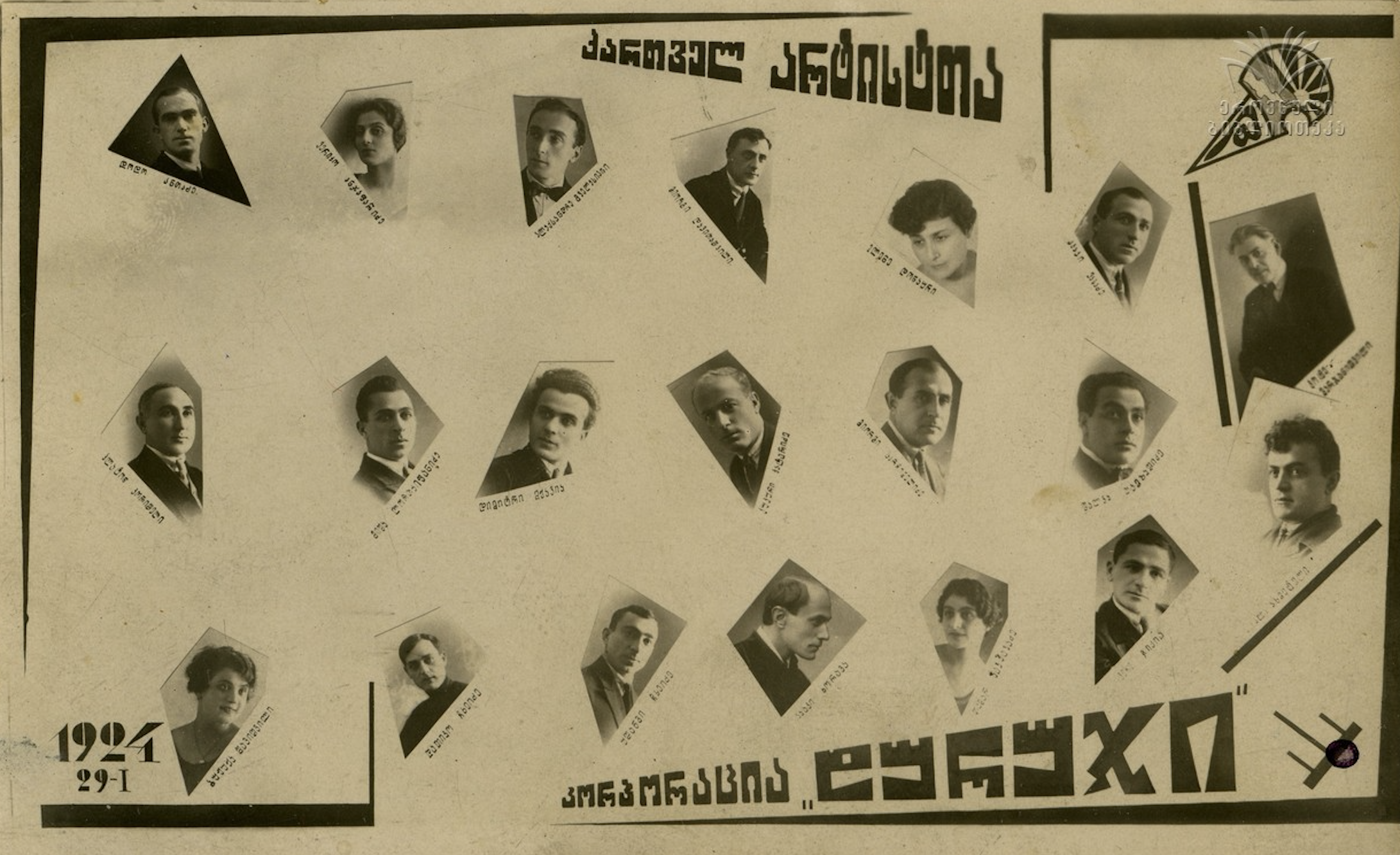
Members of the Corporation of Georgian Artists “Duruji”, 1924 Veriko Anjaparidze, Tamar Chavchavadze, Elene Donauri (Vachnadze), Bujuja Shavishvili. Archive of National Parliamentary
It is worth noting that in Georgian cosmology, the sun is predominantly associated with feminine qualities, representing a motherly figure; while the moon assumes a masculine role as father and brother. Although the gender attributions of these celestial bodies often changed during various stages of societal development, the fundamental cosmic model was as such: "The sun is my mother, the moon is my father, and the various stars are my sisters and brothers. “In the 1920s, alongside Grigol Robakidze's dramas, a stream of sunlight began to permeate the daily life of Georgian theater. Through the protagonists, rebellious women, the embodiments of the sun, the concept of light attained a new vitality on the stage, defining the image of avant-garde Georgian theater, which was nourished by myth and luminous feminine energy. The heroes incarnated by female protagonists acquired conceptual significance in the complex political and cultural contexts of the Soviet regime. The semantics of the sun, which was intersected in the plays with notions of sacrifice and free will, developed as a type of secret system of communication and was molded into a philosophical-political statement, which the Soviet authorities viewed as a dangerous force. Furthermore, these processes in Georgian theater and politics developed almost simultaneously. When the revolt against the Soviet government was organized in 1924, the Durudji Manifesto was read aloud in a theater, accompanied by the chant of the sun - Lile. Lile is the female equivalent of the Sumerian deity Enlil, known as the Mother of Light in the ancient Svan hymn. The members of Durudji adopted Lile as their own hymn, which was subsequently performed many times on stage. It evolved into a metaphor for the ritual renewal of the theater – “Lileo-and glory to you! Mother of light, remain and shine!”
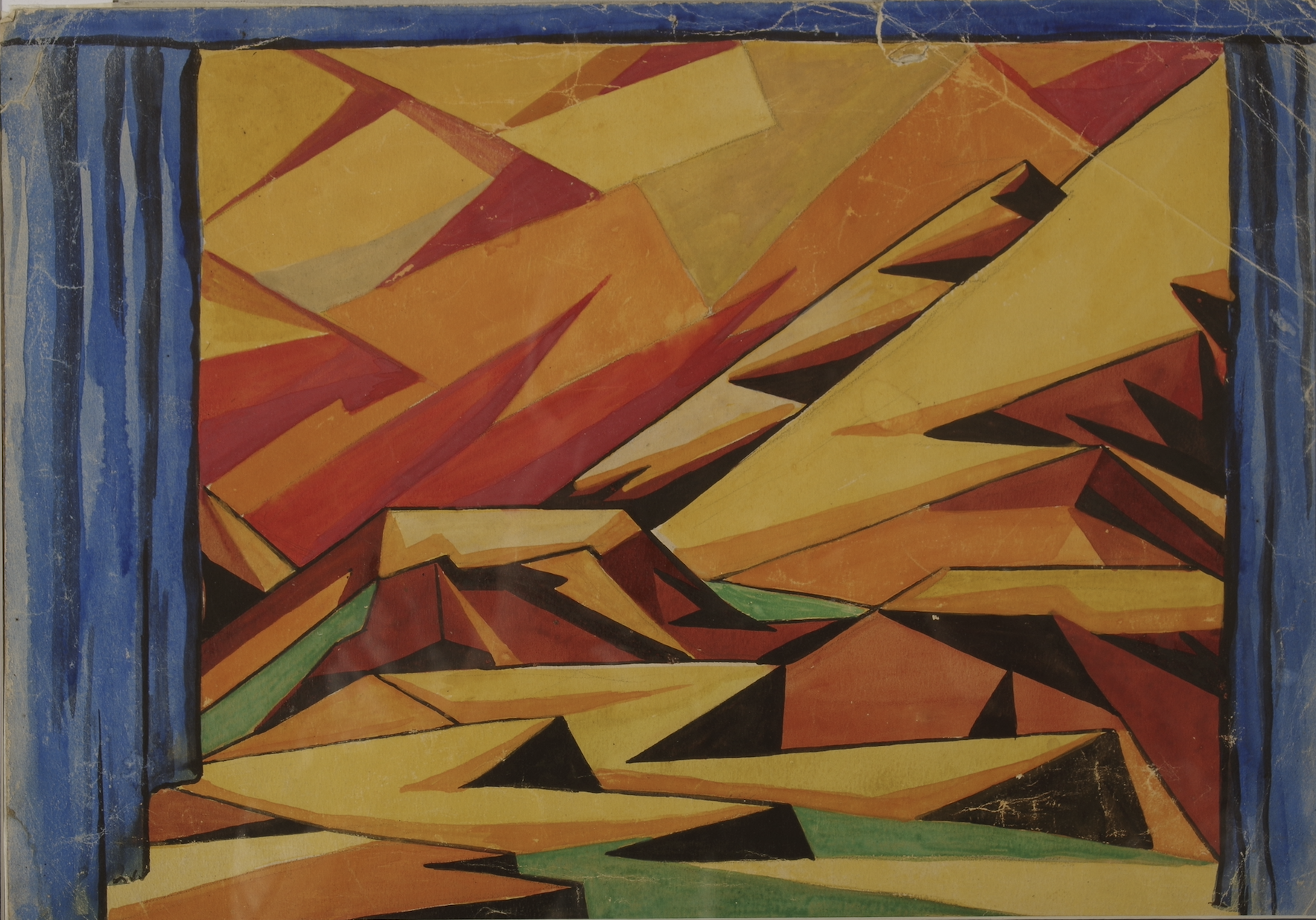
Irakli Gamrekeli, Sketch for "Londa", 1923. Shota Rustaveli Theatre Museum Collection
Prior to the Durudji Manifesto and Lile, a momentous performance of "Londa'' had been staged (the author of the play - Grigol Robakidze, director - Kote Marjanishvili, the set designer - Irakli Gamrekeli, composer Tamar Vakhvakhishvili).It was compared to "Returning to the Sun”and named the sun's mystery by Kote Marjanishvili . In fact, "Londa'' was the first Georgian modernist drama – a tragedy written in praise of the sun, interwoven with the idea of the "awakening" of society/humanity.
Irakli Gamrekeli's set design for "Londa," of which Valerian Gaprindashvili declared "the sun is screaming," visually embodied the play's central idea. The scenery portrayed a cubist landscape, the sun-baked earth, and an archaic universe expressed through abstract geometric forms that flared yellow and scarlet. The premiere took place on February 27, 1923, and "the whole of Tbilisi was talking about Londa then" (Titsian Tabidze). A year before Durudji Manifesto was read, it was baptized as a revolution in Georgian theatre.
The play is set in Kolkheti. The sun punished people with a drought. Everything was scorched and dried up. The people beg the sun to relinquish, but it demands sacrifice, and the protagonist of the drama - "a vessel of the sun," "a piece of the sun" - Londa, “in whose golden name screams the pagan age," sacrifices herself to save the world. We do not know her origin. It appears that the sea washed her ashore like a siren. Hair, as if dyed by the sun's rays, shapely, passionate body... She drove men wild. For the Blue Horns, she was both Amazon and Aphrodite.
The character portrayed by Elene Donauri (Vachnadze) was an enchanting erotic and fatal figure, who epitomized the universal essence of femininity, an eternal phenomenon. Similar to other female protagonists in Georgian modernist drama (for example ama), Londa possessed the qualities of various goddesses, including Dali, Ali, and Aphrodite. Before Londa's sacrificial act, the characters in the drama escorted her with candles, and the stage resonated with the ancient chant dedicated to the Mother of Light, Lile.

Irakli Gamrekeli, Joseph Gedevanishvili’s “Light”, costume design sketch, Pirimze. Shota Rustaveli Theatre, 1924. Kote Marjanishvili Theatre Museum Collection
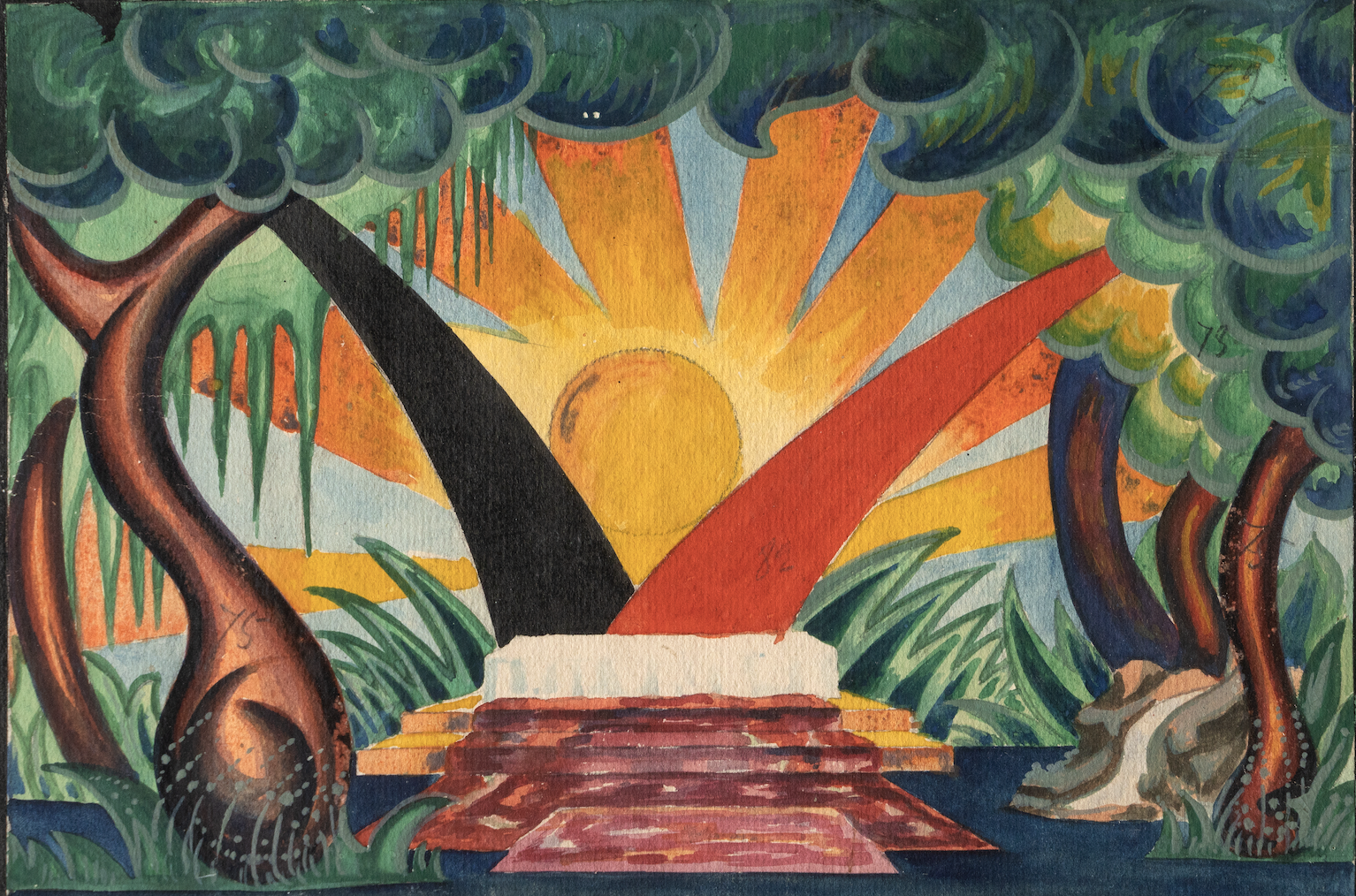
Irakli Gamrekeli, Joseph Gedevanishvili’s “Light”. Stage design sketch. Shota Rustaveli Theatre, 1924. Kote Marjanishvili Theatre Museum Collection
Another radiant female character in Georgian theater was Pirimze, who had been inspired by Ioseb Gedevanishvili's tale and featured in the play "Light." The performance was directed by Kote Marjanishvili and staged at the Rustaveli Theater in 1924, with the role of Pirimze played by Veriko Anjaparidze. She appears to be the very embodiment of light itself in a costume designed by Irakli Gamrekeli. With gleaming yellow sun disks and a crown of scarlet rays upon her head, she radiates against the azure backdrop – just like the sun in the sky. In composition and concept, she evoked impressions of the Colossus of Rhodes (the statue of the sun-god, Helios) and its contemporary counterpart, the Statue of Liberty.

Tamar Vakhvakhishvili, Composer (1893-1976). Archive of National Parliamentary Library of Georgia

Tamar Tsulukidze, Mzeta Mze 1926. Shota Rustaveli Theatre Museum Collection
In 1926, the debut performance of the first Georgian pantomime "Mzetamze '' was held (music by Tamar Vakhvakhishvili, set and costume designs by Lado Gudiashvili and Dimitri Shevardnadze). It was a story of transformation, a struggle for freedom and love, with elements of folklore, evil spirits, and witches, accompanied by folk music and dances, with Tamar Tsulukidze playing the role of "Mzetamze." A few years later, she created the image of the sun-woman in "Lamara '' – a destiny-defining play of Georgian avant-garde theater.
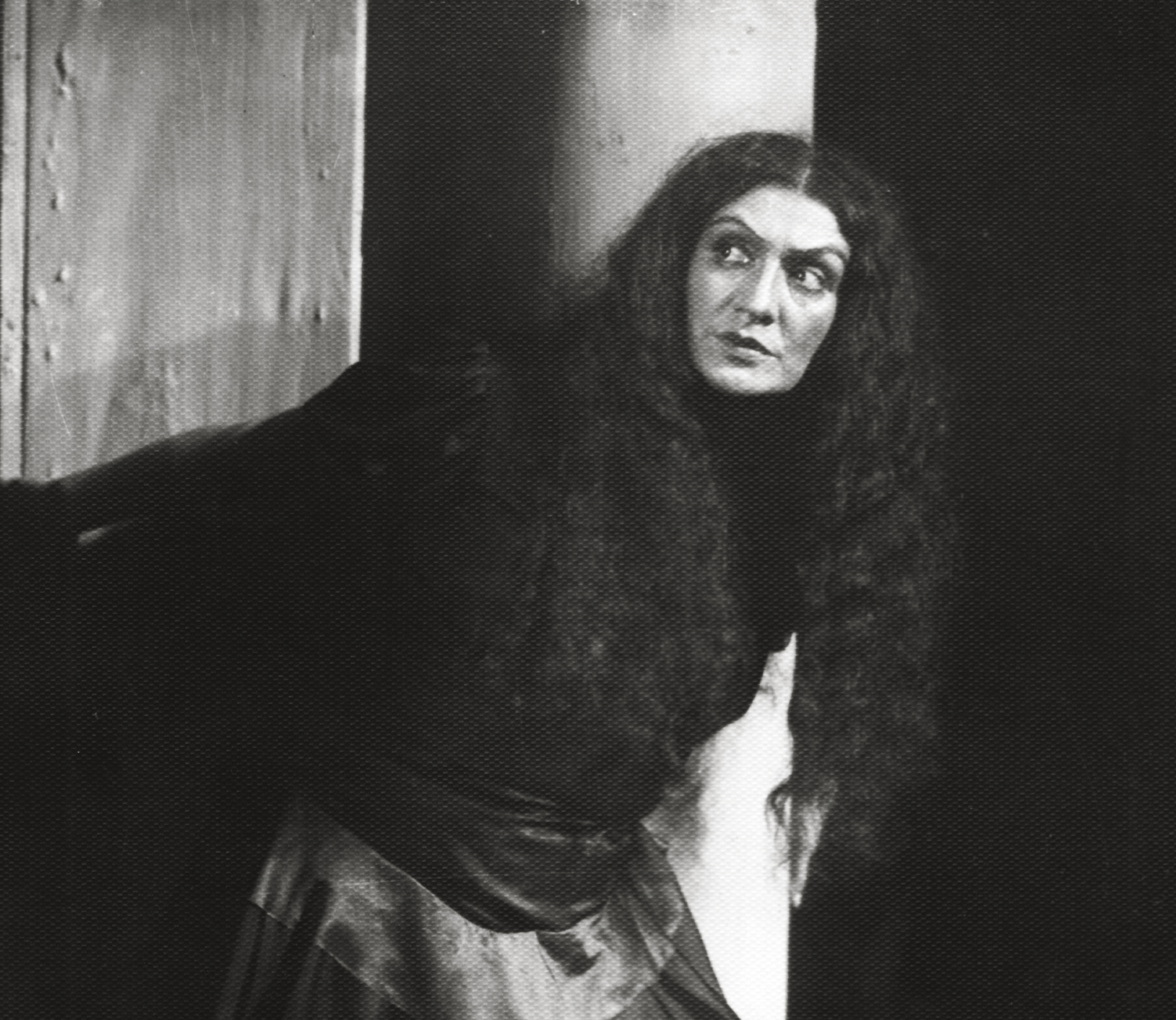
Tamar Chavchavadze, Laurencia. Was playing a role of Lamara in 1926 year performance. Shota Rustaveli Theatre Museum Collection
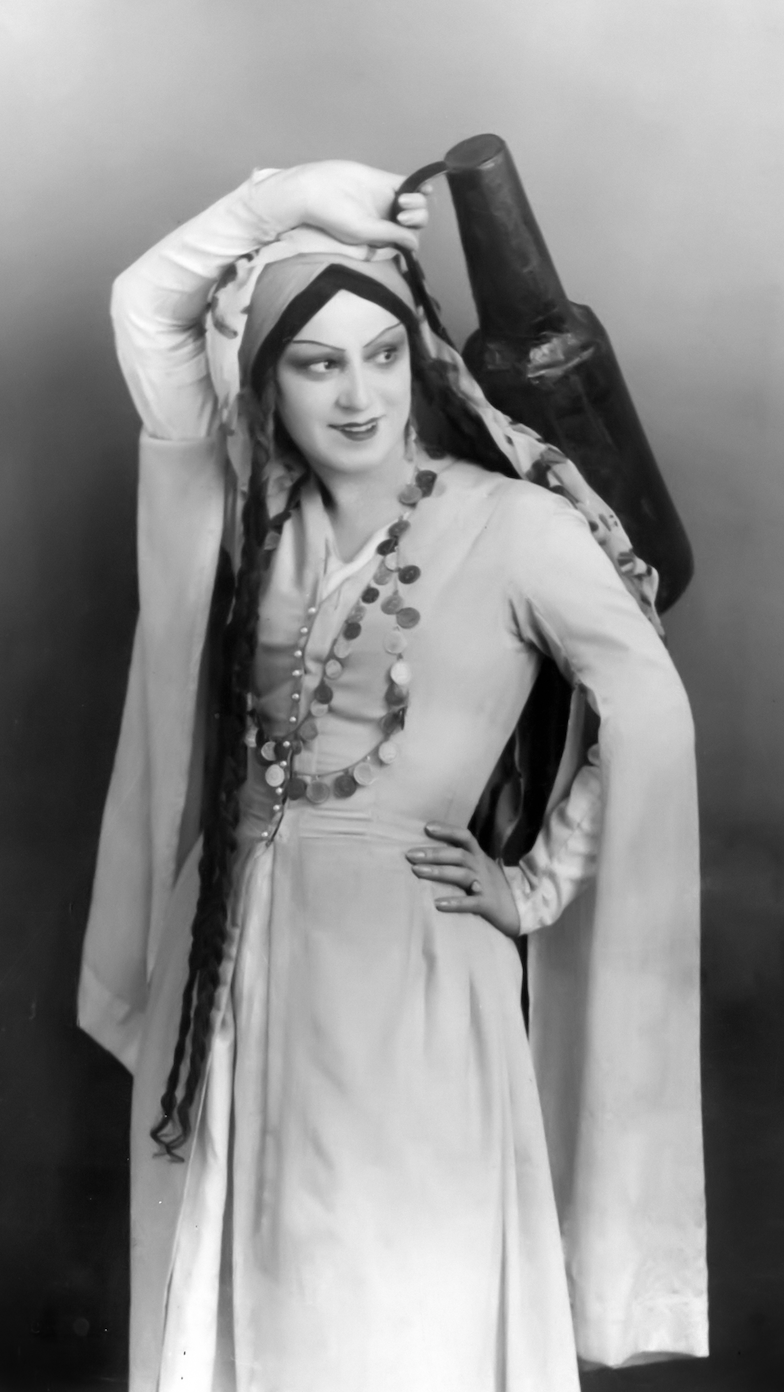
Tamar Tsulukidze, Lamara, 1930. Shota Rustaveli Theatre Museum Collection

Tamar Tsulukidze. Archive of National Parliamentary Library of Georgia
"Lamara" is a five-act pastoral that symbolically portrays the characters' "ascent" to the realm of freedom, which is accomplished through the symbolism of the sun and its reincarnated image, Lamara. The terraced set design of "Lamara," which was created by Irakli Gamrekeli, at the same time represented an architecture, metaphor, dwelling, and a pedestal for characters that were elevated to superhuman status. Here, once again, the sun was embodied in the form of a woman on earth. The love of the garnet-haired Lamara was turning out to be fatal. It seems that she was incorporating the qualities and hues of a fiery radiance, as if she was wearing the sun upon her body. Mindia and his beloved were undergoing a transformation under the influence of the sun and each other, and moving into a new phase of existence. In a letter written in Geneva in 1954 entitled "Lamara - A Brief Biography," Grigol Robakidze associated the play with his own essence. Indeed, "Lamara" played a pivotal and dramatic role in the author's life and in the annals of Georgian theatrical history. In this letter, Robakidze also delved into the etymology of Lamara, reducing connections with the pagan goddess Lagamar and the Svan Shrine of Lamaria. He also discussed the surge in popularity of this name in Georgia following the performance: "Georgian women have never been called "Lamara" - many "Lamaras" appeared after the drama was staged."

Irakli Gamrekeli, Grigol Robakidze’s “Lamara”. Maquette, 1930. Shota Rustaveli Theatre Museum Collection

Irakli Gamrekeli, Grigol Robakidze’s “Lamara”, Maquette. Shota Rustaveli Theatre, 1930. Khatuna Melikishvili’s Collection
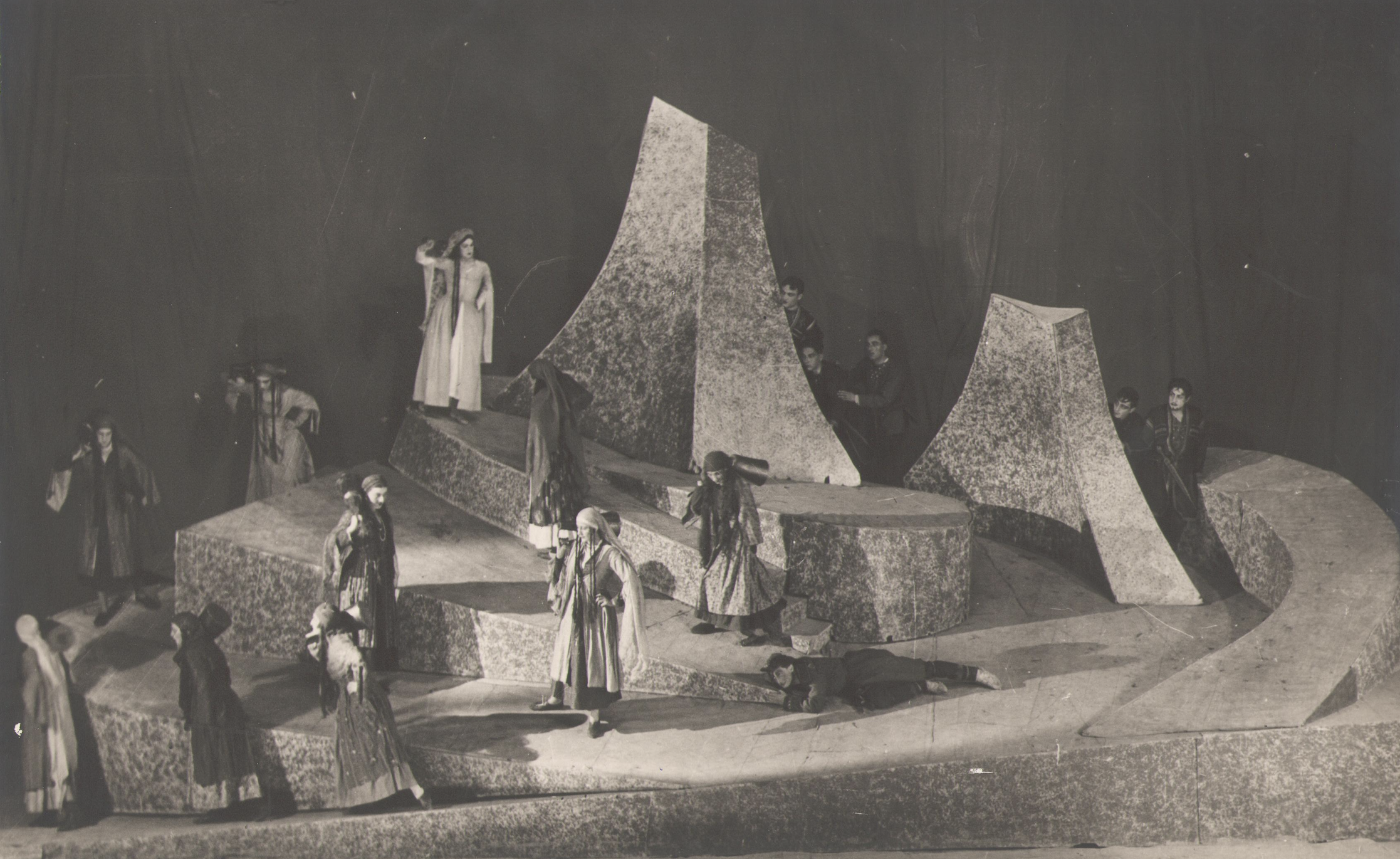
“Lamara”, 1930. Shota Rustaveli Theatre Museum Collection
In the political reality of Georgia, this mysterious world where freedom is held as the ultimate human value and where characters transformed into super humans and heroes, became a kind of manifesto for resisting Soviet oppression and preserving individuality. This resistance was met with a consequent wave of repressive measures. Research on Georgian modernism, which was violently halted in the 1930s, resumed only half a century later. Even today, a century after those events took place, Georgian theater continues to be a mythical realm, its brilliance punctuated by the names of those heroic sun-women who cast a lasting glow on the pages of history.
“Lileo - and glory to you!
Mother of Light, stay and shine!
Oh, white sun, glory to you!
You are the hope that lights the sky,
Thousands of years we will glorify you:
Glory to you! Glory to you!"
Lamara, 1930
National Archives of Georgia